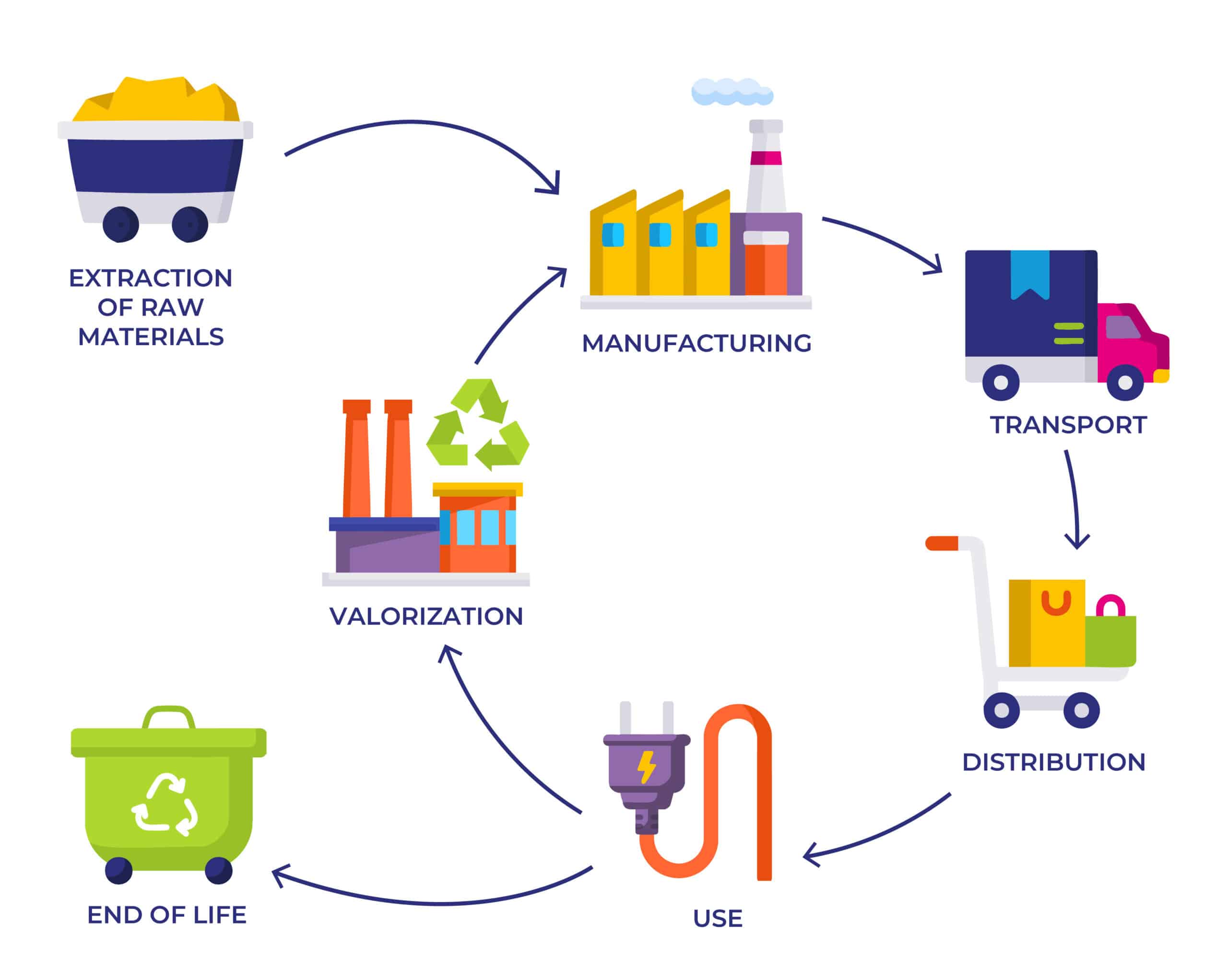In a context where ecological transition has become a strategic priority with growing requirements, companies must demonstrate their environmental commitment. This commitment must be based on reliable and verifiable data.
Life Cycle Assessment (LCA) has emerged today as the reference method for rigorously assessing the environmental impacts of a product, service, or process.
But concretely, what is an LCA? What are its objectives and key steps?
Life Cycle Assessment
LCA (Life Cycle Assessment) is an environmental evaluation method that quantifies the impacts of a product throughout its entire life cycle:
- Extraction of raw materials
- Transformation and manufacturing
- Transportation
- Use phase
- End of life (recycling, incineration, landfill,..)
What types of LCA exist?
An LCA can be carried out according to four different scopes, depending on the life cycle stages considered. Various environmental indicators can also be assessed.
The different scopes of study:
- Cradle to grave: full life cycle
- Cradle to gate: from extraction to factory output
- Gate to gate: intermediate stage (often production)
- Cradle to cradle: includes recycling within a circular economy approach
The different types of indicators:
- Single-criterion LCA: only one environmental aspect is assessed, often greenhouse gas (GHG) emissions (in CO₂e).
- Multi-criterion LCA: more comprehensive, integrating a variety of environmental indicators in the same study. When several criteria are assessed, it is possible to establish a single aggregated score to compare product impacts, even if the indicators are not directly comparable individually.
The choice depends on the study’s objectives: product comparison, environmental labeling, CSR strategy, eco-design, etc.

What is the purpose of a Life Cycle Assessment?
LCA enables companies and institutions to:
- Identify the most impactful phases of the life cycle
- Justify design or optimization choices
- Compare different products or technical scenarios
- Comply with requirements of environmental labels, tenders, or European directives such as the Ecodesign Directive, the EU Taxonomy, or the upcoming Corporate Sustainability Reporting Directive (CSRD)
- Communicate transparently about environmental performance to clients, partners, or investors

What does an LCA measure?
An LCA measures the environmental impact of a product or project. It often relies on a multi-criteria approach with several environmental indicators. Among the most common:
- Climate change (greenhouse gas emissions – CO₂ equivalent)
- Water consumption
- Depletion of natural resources
- Air and soil pollution
- Acidification and eutrophication of ecosystems
- Ecotoxicity, impact on biodiversity, etc.
These indicators are based on harmonized methods and regulatory frameworks, including ISO 14040/44 standards, the European Product Environmental Footprint (PEF) framework, and recognized methodologies such as ReCiPe or ILCD.
What are the steps of an LCA?
Framed by ISO 14040 and ISO 14044, an LCA follows a clear methodological structure:
- Goal and scope definition
- What is the function of the product?
- What functional unit (FU) is used?
- Life Cycle Inventory (LCI)
- Data collection: energy consumption, raw materials, transport, emissions, waste
- Data must be representative of a defined period (reference year) and reflect the real context of the system studied (geography, technology, timeframe).
- Life Cycle Impact Assessment (LCIA)
- Translation of flows into impacts using recognized methods
- Interpretation and critical review
- Recommendations, improvement points, uncertainties, possible limitations
In some cases (comparative LCA or external communication), an external critical review is required in compliance with ISO 14071, to ensure transparency and robustness of results.

Why conduct an LCA?
Life Cycle Assessment is today a strategic lever for companies engaged in the environmental transition. It enables you to:
- Support technical decision-making with objective data
- Showcase eco-design efforts
- Anticipate European regulatory requirements
- Meet growing client expectations for transparency and sustainable products
- Differentiate yourself in a fast-changing market strongly focused on sustainability
PINK Strategy supports companies in carrying out LCAs tailored to their industrial and regulatory challenges.
Would you like to evaluate the environmental footprint of your products or services?
Contact us now at: contact@pink-strategy.fr
